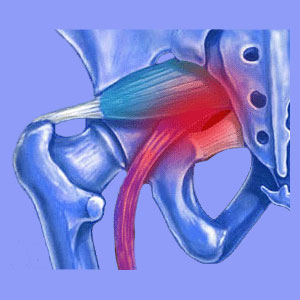
A painful sciatic nerve can be a real misery to deal with, since this structure is directly responsible for providing sensory and motor abilities for almost the entire lower body region. Sciatic nerve pain can be widespread, all-consuming and extremely functionally limiting for any affected patient. Worse still, there are many potentially causes of true spinally-motivated sciatica, as well as just as many causes of pseudo-sciatica, making accurate diagnosis a substantial challenge.
This essay will provide the reasons which might explain a variety of sciatic nerve symptoms. We will also provide clarification of some misconceptions about the sciatic nerve.
Painful Sciatic Nerve Conditions
Many patients are under the impression that their sciatica is caused by a pinched sciatic nerve. The sciatic nerve can be pinched during some muscular issues, such as piriformis syndrome, but can not ever be compressed by a spinal source, such as a herniated disc. This is because the sciatic nerve does not even extend up the body high enough to meet the spine at all.
When a doctor makes the over simplified diagnosis of a disc or bone spur pinching the sciatic nerve, what they actually mean to say is that one of the spinal nerve roots, which eventually meet to form the sciatic nerve, is impinged upon. They do not mean that the disc or bone spur pinches the sciatic nerve itself, since this is anatomically impossible.
Sciatic Nerve Symptoms from Ischemia
Spinal pinched nerves account for many cases of acute and chronic sciatica symptoms. However, most of the structural issues will resolve on their own or with appropriate medical treatment.
Non-spinal structural issues, such as sacroiliac joint pain or piriformis pain also make up a considerable percentage of sciatic sufferers. However, some of the more common causes of chronic sciatica syndromes, include many nonstructural processes. These causations are not always factored into the mix by some doctors or complementary care providers, so it is up to the patient to remember that not all sciatica is structurally-motivated.
The usual nonstructural causes of sciatic nerve pain may include diabetic and other peripheral neuralgias, muscular concerns such as imbalances, leg length discrepancies, vascular concerns, tumors and regional ischemia.
Neurological oxygen deprivation is a very painful event to endure and may continue unchecked for many years. This is especially true for ischemia enacted by a psychosomatic process. This type of subtle emotional causation is rarely correctly diagnosed and typically sets the stage for a plethora of unsuccessful treatment attempts.
Painful Sciatic Nerve Experiences
I have suffered terribly with a variety of back pain conditions, including variable sciatica, for decades. I did everything possible to treat these oppressive tormentors, but had no success in beating my pain. I was ready to give up and really thought long and hard about undergoing sciatica surgery in the hopes of resolving the issues I originally embraced as being causative.
This was when I finally came across the work of Dr. John Sarno and found his ideas to be both highly logical and deeply personally applicable to my own story. I tried his approach and found it to be the best medical method I had ever seen. My pain disappeared quickly and was eventually completely cured once I implemented a variety of other effective techniques into my self-care plan.
My point is a simple one. Please, do not follow my lead in waiting for too long to get more involved in your own care. Do not wait to ask questions. If you do, you will surely follow my lead in suffering for what seems like an eternity and might even succumb to unnecessary surgical barbarism. Learning the true objective facts about sciatica is a good place to begin.





